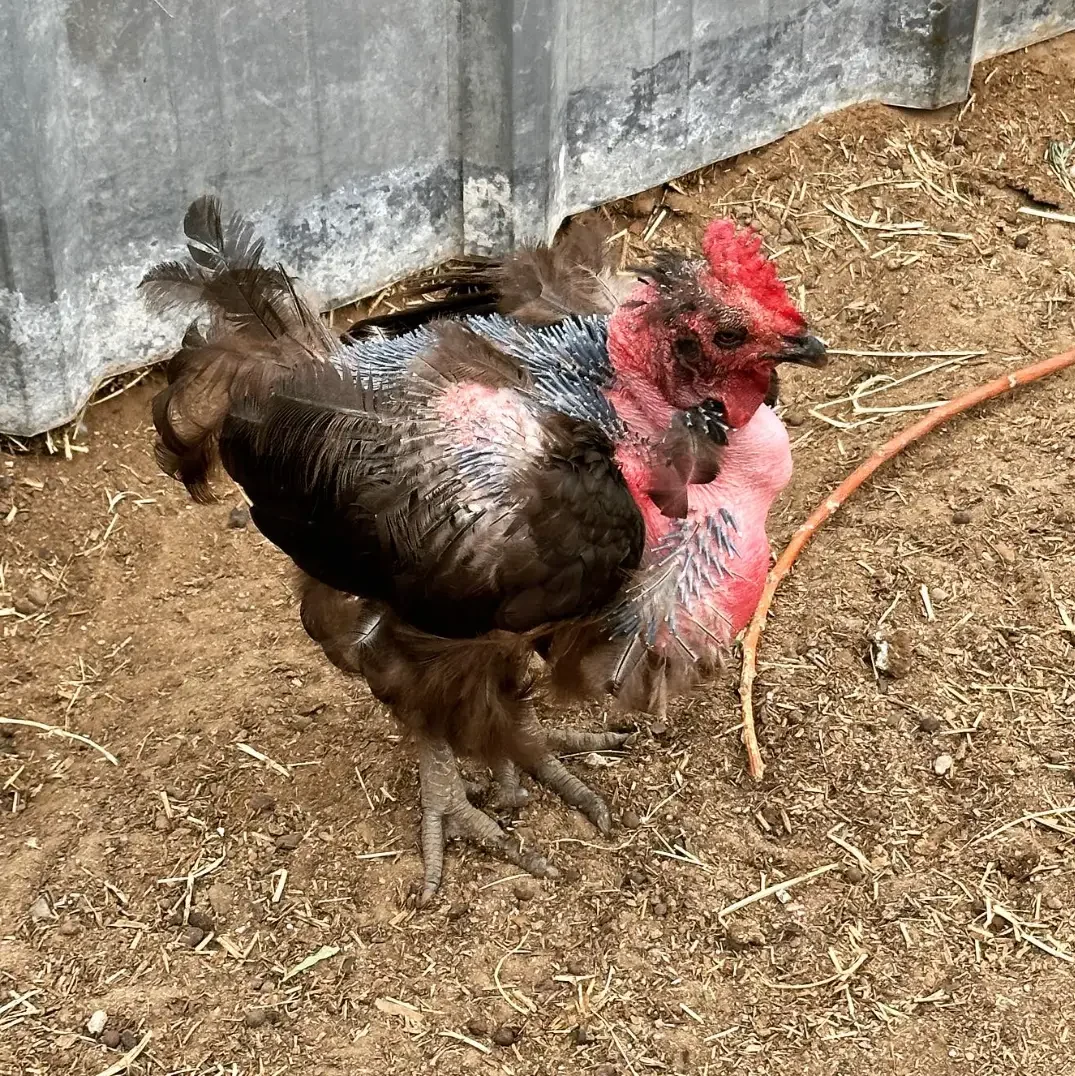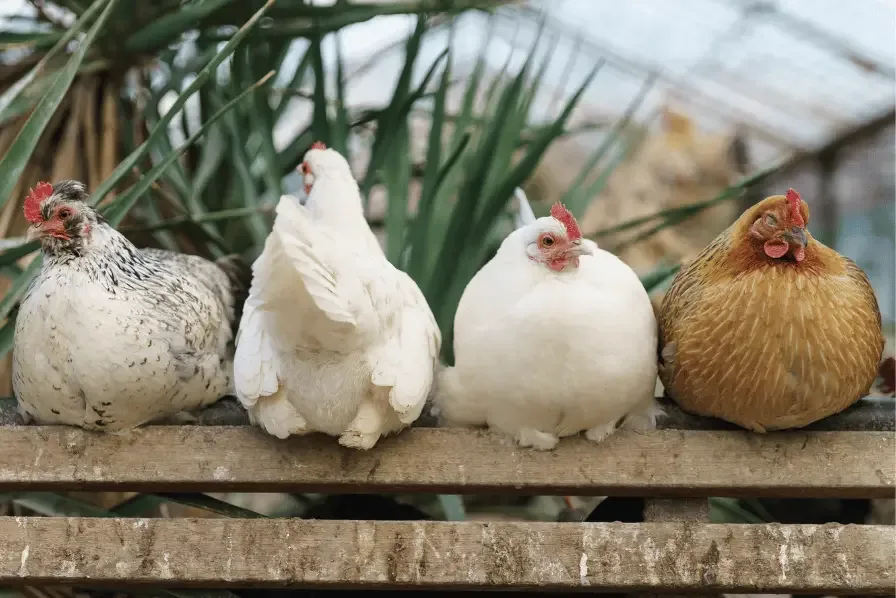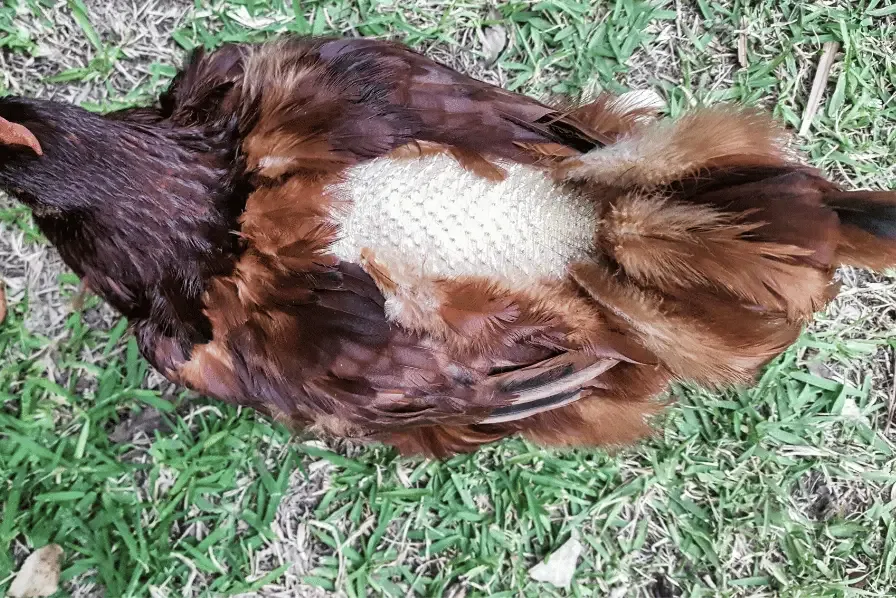Chickens are wonderful creatures, and those who raise them know that they require specific care and attention.
One of the most interesting aspects of chicken care is molting, a natural process that occurs in all chickens.
However, some chicken enthusiasts don’t understand what molting is or how to help their molting chickens.
In this post, we will discuss:
- What is molting and why do chickens go through it?
- Signs of molting in chickens
- How to care for molting chickens
- Molting in different breeds
- Frequently asked questions

Understanding Molting
Molting is the shedding and regrowth of feathers, and it can be a confusing and stressful time for both the chicken and the owner.
In this section, we will go over what molting is and what the process looks like:
What Is Molting?
Molting is a natural process that chickens go through in order to replace their old feathers with new ones.
During this process, chickens shed their old feathers, and new ones grow in their place.
This process typically occurs once a year, although some chickens may molt more frequently.
Molting can last anywhere from a few weeks to a few months, and during this time, chickens may stop laying eggs and appear to be in poor health.
However, with proper care and attention, chickens can successfully navigate this process and emerge with healthy new feathers.
The Molting Process
The molting process can be divided into three stages:
- Pre-molt
- Molt
- Post-molt
During the pre-molt stage, the chicken’s body starts to prepare for molting by reducing egg production and diverting nutrients toward feather growth.
The molt stage is when the actual feather shedding occurs, and the chicken may appear bald or patchy.
The post-molt stage is when new feathers begin to grow, and the chicken’s body returns to normal egg production.
Types of Molting
There are two types of molting: natural molting and induced molting.
Natural molting occurs as a result of changes in daylight hours and temperature, while induced molting is intentionally triggered by farmers to improve egg production.
Induced molting involves depriving the chickens of food and water for a period of time to shock their bodies into molting.
However, this practice is controversial and has been banned in some countries due to concerns about animal welfare.

Signs of Molting
One of the most common questions regarding chicken molting is, “What are the signs of chickens molting?”
In this section, we discuss the physical and behavioral changes that chickens go through during the molting process:
Physical Indicators
When chickens molt, they go through a process of shedding their old feathers and growing new ones.
This can cause some noticeable physical changes in the chicken’s appearance.
One of the most obvious signs of molting is the presence of feathers on the ground or in the chicken’s bedding.
The feathers that are shed during molting may be large or small, and they may be found in clumps or scattered around the coop.
Another physical indicator of molting is the appearance of new pin feathers.
These are small, thin feathers that are just starting to grow.
They may appear as small bumps on the chicken’s skin, and they may be covered in a protective sheath.
As the pin feathers grow, the sheath will break off, revealing the new feather.
Behavioral Changes
In addition to the physical changes, chickens may also show some noticeable behavioral changes during molting.
One common behavior is a decrease in egg production.
This is because the chicken’s body is busy focusing its energy on growing new feathers, rather than producing eggs.
Chickens may also become more skittish or nervous during molting.
This is because the process of growing new feathers can be uncomfortable or even painful for the chicken.
They may be more sensitive to touch or handling during this time.
Overall, it is important to monitor your chickens closely during molting to ensure that they are healthy and comfortable.
Providing a stress-free environment with plenty of food and water can help them through this process.

Caring for Molting Chickens
Caring for molting chickens can be simple if you know the proper procedures.
Here are some nutritional and environmental changes that can be made when your chickens are going through a molt:
Nutritional Needs
During molting, chickens require a high-protein diet to support feather regrowth.
It is recommended to increase their protein intake to at least 16%, which can be achieved by providing them with a balanced diet of commercial feed, scratch grains, and fresh greens.
Other high-protein sources include:
- Mealworms
- Black fly larvae
- Meat scraps
- Insects
- Worms
- Eggs
- Seeds
- Sprouts
It is also important to ensure that chickens have access to clean water at all times, as dehydration can slow down the molting process.
Environmental Adjustments
Molting chickens may feel more vulnerable and require a comfortable and stress-free environment.
Providing a clean and dry coop with fresh bedding can help reduce stress and prevent infections.
It is also important to provide adequate ventilation to prevent respiratory issues.
During colder months, additional heat sources should be provided to keep chickens warm.
Molting chickens may also benefit from a dimmer light source to reduce stress and encourage rest.
Handling and Stress Reduction
Handling molting chickens should be done with care and gentleness, as their skin may be more sensitive and prone to injury.
Limiting handling and disturbances can help reduce stress and promote healing.
Providing a dust bath can also help chickens clean themselves and alleviate itching caused by new feather growth.
It is important to monitor molting chickens for signs of illness or infection, such as lethargy or discharge, and seek veterinary care if necessary.
By providing proper nutrition, a comfortable environment, and reducing stress, chicken owners can help their molting chickens recover and grow healthy new feathers.

Common Issues During Molting
It is important to understand the common issues that arise during molting in chickens.
Here are some of the most common ones:
Feather Picking
Feather picking is a common issue that occurs during molting.
Chickens become more sensitive and irritable during this time and may pick at each other’s feathers.
This can lead to feather loss, skin damage, and even infection.
To prevent feather picking, it is important to provide adequate space for the birds and to keep them well-fed and hydrated.
Additionally, providing distractions such as toys or hanging treats can help keep the birds occupied and less likely to engage in feather picking.
Reduced Egg Production
Another common issue during molting is reduced egg production.
As the birds focus their energy on growing new feathers, they may temporarily stop laying eggs or produce fewer eggs than usual.
To minimize the impact of reduced egg production, it is important to ensure the birds are receiving a balanced diet with adequate nutrients.
Additionally, providing a stress-free environment can help reduce the impact of molting on egg production.
Final Thoughts
Molting is a completely natural process that chickens go through.
The process can be stressful for both the chicken and chicken owner.
However, with proper care and attention, the process can go smoothly without any issues.
Providing a high-protein diet and a safe and secure living environment is essential for the chicken’s health during a molt.
It is also important to watch for any health issues such as extreme lethargy, skin damage, or infection so that treatment can be provided right away.
Overall, chicken molting is a common process and with the proper handling, both chickens and chicken owners can get through it with minimal stress.
Frequently Asked Questions
What months do chickens molt?
Chickens typically molt during the fall or early winter months, but the exact timing can vary depending on the breed and age of the chicken as well as the environment where you are located.
Some chickens may molt as early as July, while others may not start until November.
What are the signs of chickens molting?
The most obvious sign that a chicken is molting is the loss of feathers.
Chickens may also appear more lethargic or have a decrease in egg production.
During molting, new feathers will start to grow, which can cause some discomfort for the chicken.
Is molting stressful for chickens?
Molting can be stressful for chickens, as it requires a lot of energy and resources from their bodies.
Chickens may also be more vulnerable to predators during this time, as they are less able to fly or escape danger.
Providing extra protein and a stress-free environment can help minimize the stress of molting.
What triggers chickens to start molting?
The primary trigger for molting is the decrease in daylight hours during the fall and winter months.
This change in light signals to the chicken’s body that it’s time to shed old feathers and grow new ones.
Other factors, such as stress or illness, can also trigger molting.
How can you distinguish between molting and parasite infestations in chickens?
Molting and parasite infestations can have similar symptoms, such as feather loss and decreased egg production.
However, with parasite infestations, chickens may also exhibit other signs, such as weight loss, anemia, and visible parasites on the skin or feathers.
A veterinarian can help diagnose and treat parasite infestations.
Is there a particular season when chickens are most likely to molt?
Chickens are most likely to molt during the fall and early winter months, but the exact timing can vary depending on the breed and age of the chicken.
Some chickens may molt earlier or later than others.
It’s important to provide proper nutrition and a stress-free environment during this time to support the chicken’s health and well-being.

